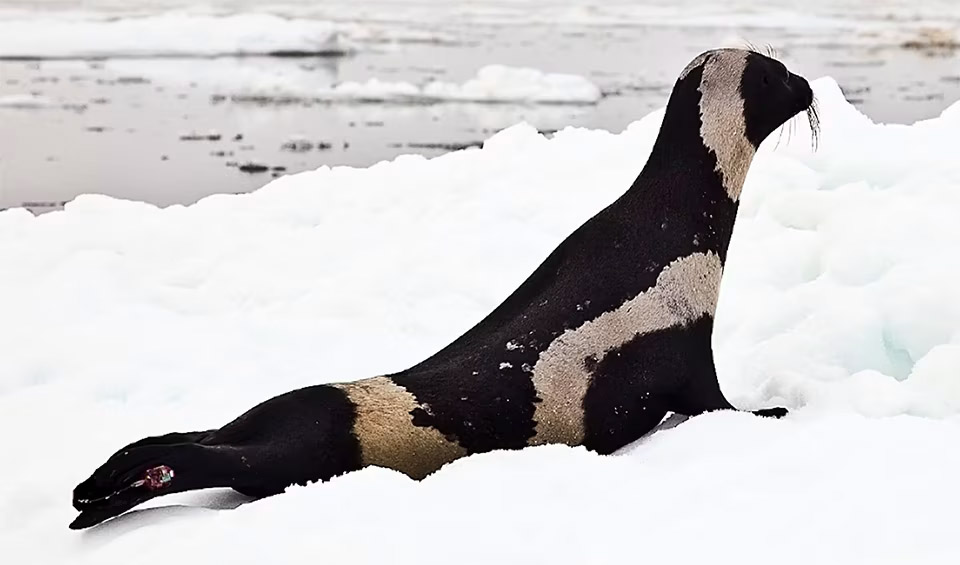Histriophoca – Ribbon seal
Named after the dark body color with “ribbons” around their necks, hips, and front flippers
The Ribbon seal stands out among ice seals for its striking appearance, marked by distinct white stripes and circles that contrast sharply against its black or dark brown fur. This unique patterning makes it one of the most visually distinctive seals in the Arctic.
Ribbon seals are medium-sized compared to other seal species, with adults capable of reaching lengths of up to 1.8 meters (5.9 feet) and weighing approximately 95 kilograms (210 pounds). The most distinguishing features of the Ribbon seal are the two wide white stripes and two white circles adorning their bodies. One stripe encircles the neck, and another wraps around the mid-rear section, while the circles envelop the fore flippers on each side. This distinctive pattern is not just for show; it plays a role in social signaling and may help camouflage against predators in their icy environment.
These seals are primarily nocturnal foragers, utilizing the cover of night to hunt for prey. They exhibit remarkable adaptability in their feeding habits, with diets that change as they grow. Juvenile Ribbon seals tend to feed on shrimp and other small crustaceans, capitalizing on the abundance of these prey items in their Arctic and sub-Arctic waters. As they mature into adulthood, their diet diversifies to include a broader range of fishes, crustaceans, and cephalopods, demonstrating their opportunistic feeding behavior.
Ribbon seals are also highly adapted to life in cold, icy waters, spending significant time foraging in the water or traversing between areas of lighter sea ice and their breeding grounds. The sea ice plays a critical role in their life cycle, providing essential habitats for resting, molting, and breeding.
Species in this genus
Ribbon seal
Named after the dark body color with “ribbons” around their necks, hips, and front flippers

